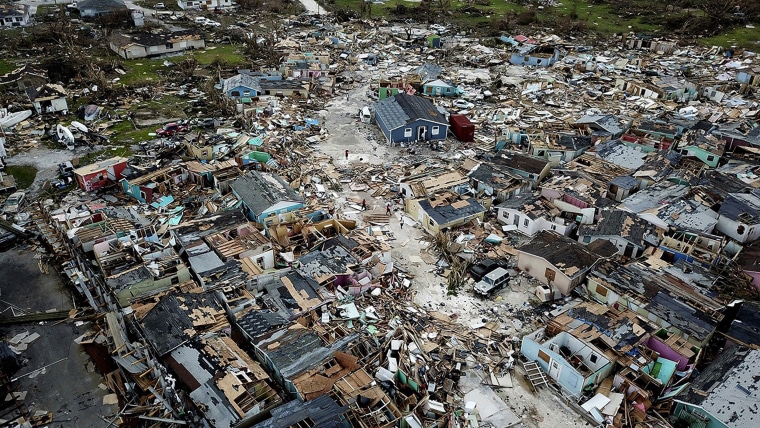Hurricanes might not be becoming more frequent, but they are certainly becoming more intense, and they are doing so in ways consistent with the predicted impacts of climate change. We only need to look as far as the Caribbean to observe this in the extraordinary damage caused by Hurricane Dorian this September — flooded houses, destroyed cars and swamped infrastructure that caused scores of deaths.
Human settlements are getting more vulnerable to those hazards as the climate changes around them. Climate change can speed erosion and change shorelines and vegetation patterns, reducing natural barriers and making it harder to mitigate the devastation.
It’s much easier to save lives, and assets, by properly preparing for storms and other hazards than by responding after the fact.
We can protect ourselves to some degree from these dire events, but only if we act before disasters strike. It’s much easier to save lives, and assets, by properly preparing for storms and other hazards than by responding after the fact. Cost-benefit analyses of disaster risk reduction and climate adaptation programming often find savings in the range of three dollars for every one spent.
To do that, however, we need to understand disaster patterns, intensity and probabilities. With weather patterns shifting, it is getting harder to predict when and how hazards like hurricanes will hit. This would be bad enough, but the U.S. government has been making the situation worse by suppressing climate change — and preventing important information and resources from reaching those who need it most — including the U.S. agencies that are increasingly carrying the burden of responding to these catastrophes.
The federal government has not been in the business of emergency management very long, with most disaster responses before the mid-20th century funded by local governments, business leaders or charity subscriptions. However, the increasing involvement of the federal government has made states and municipalities more and more dependent on national funding. That also means that state and local organizations are subject to federal government priorities, such as allocating more grant funds for terrorism than natural hazards.
Moreover, climate change is a national (and global) crisis: With cross-border impacts and interactions from coast to coast, it’s a problem that requires national as well as state and city involvement. But for that to be effective, government has to recognize the danger and deal with it systematically.
Unfortunately, we’ve seen the opposite. References to climate change have been removed from government websites, particularly from those headed by administration appointees. While the Federal Emergency Management Agency continues to have a page of climate change information, many of the publications and policy documents are years out of date. In some cases, we’ve seen efforts by the administration to hamper state initiatives, as with the recent threat to revoke California’s emissions limits.
Nor is the federal government the only culprit: In Florida, one of the states most vulnerable to climate change, officials were reportedly ordered not to reference “climate change” in official documents. A recent study found that the cities most vulnerable to climate change are the least prepared.
Refusing to recognize or study the impacts of climate change has serious consequences for disaster preparedness, and therefore for disaster impacts and response. In fact, poor modeling can have fatal consequences, as occurred in Japan when the 2011 tsunami went much farther inland than simulations had predicted, destroying some designated shelters.
Changes in hazard patterns also undermine local knowledge, normally one of the most powerful assets in predicting impacts. Without an effective understanding of how hazards are changing, it’s more difficult for residents to make individual decisions about evacuating, reinforcing their houses or moving altogether. Residents, for instance, may choose not to evacuate on the basis that they’ve survived storms in the past without realizing that rising sea temperatures are changing the ways storms work, from their intensity to the time they spend in one place.
Government and nongovernmental aid agencies are also less able to plan effective responses if they can’t predict impacts. Rebuilding and reconstruction efforts intended to “Build Back Better” — reducing vulnerability to future hazards — may fail if they don’t have access to evidence-based predictions.
This is especially worrying because climate change, along with direct environmental exposure due to wetlands destruction and overdevelopment, is putting more and more communities in danger. That means that the government is becoming exposed to more risk in probable rebuilding costs; yet the existing programs aren’t equipped to handle the scale of the needs and won’t be unless based on accurate projections.
Government is becoming exposed to more risk in probable rebuilding costs; yet the existing programs aren’t equipped to handle the scale of the needs.
For example, a FEMA buyout program is one of the few ways for people living in flood-prone areas to move without a total loss of their housing investment, but a recent report showed that the program takes years — often as many as five and sometimes nearly a decade — to complete the sales, exposing homeowners to more uncertainty and risk and the program to higher costs. This will only worsen as more storms hit.
And while annual disaster spending by the federal government is already soaring — a Washington Post report found it had increased from less than $1 billion in the 1980s to nearly $8 billion today — the mechanics for allocating that funding remain cumbersome and politicized, exacerbating the problem. Ad hoc disaster relief bills by Congress, the current default, are a slow and subjective way to reimburse costs.
Disasters are not exceptional any more: They are the norm. We, and the governments that serve us, better start treating them that way.



